BRETT TINGLEY AND TYLER ROGOWAY
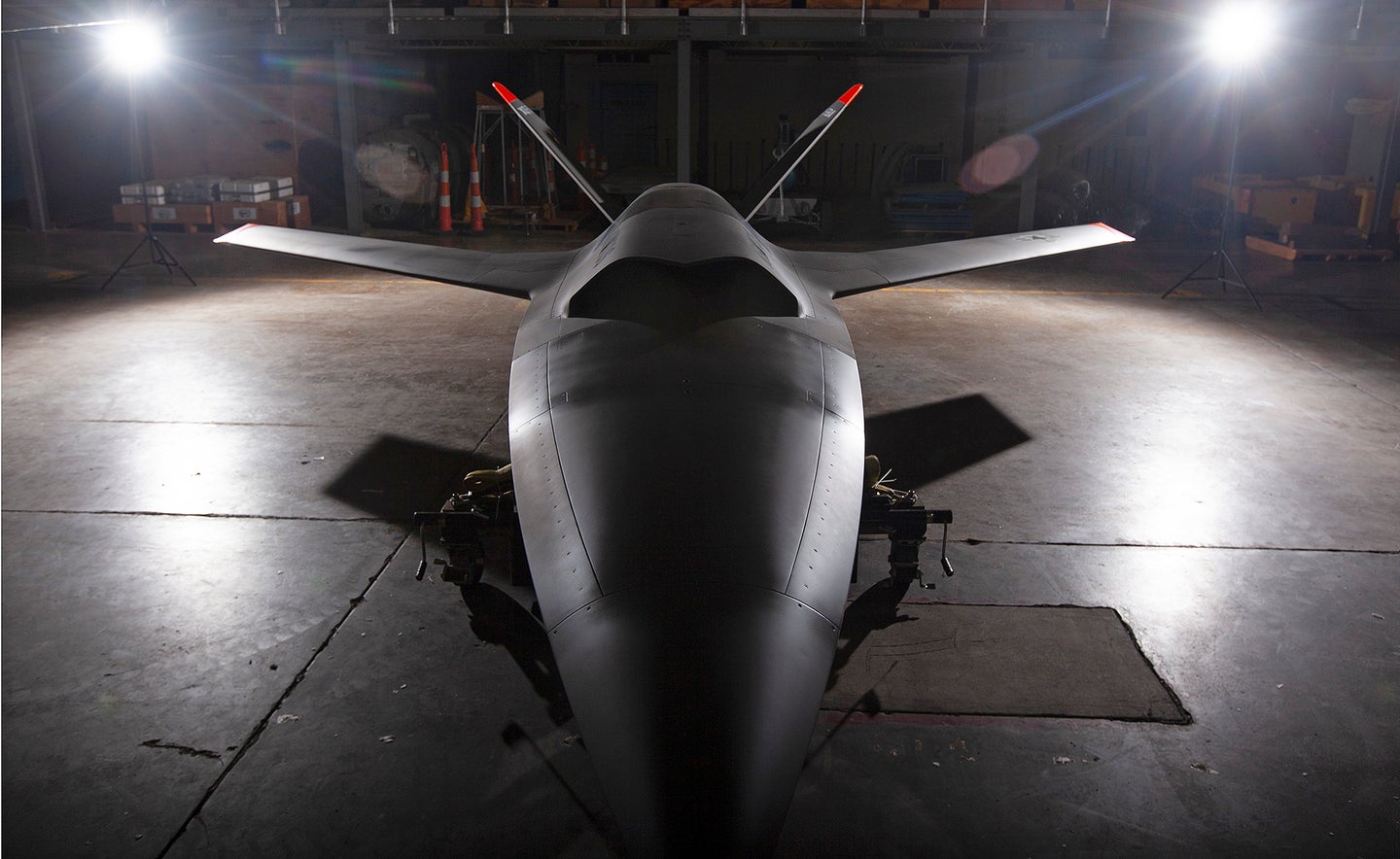
The U.S. Air Force is looking to field a new type of low-cost yet advanced drone to be used as an “Off-Board Sensing Station,” or OBSS. Details remain very limited, and the few publicly available Air Force Research Laboratory documents on the program state that specifics are only available to approved contractors. Still, according to Kratos, one of the companies involved with the effort, the new unmanned platform could potentially end up being as revolutionary as the firm's stealthy XQ-58 Valkyrie has been.
The remarks about the OBSS program were made by Eric DeMarco, President and Chief Executive Officer of Kratos Defense & Security Solutions, during a company earnings call this week. DeMarco says that if the program is successful, the company believes it “could ultimately be as significant and transformational to Kratos as we expect Valkyrie to be." The CEO added that the OBSS program is a signal that “the total addressable market opportunity for Kratos' class of tactical drones is rapidly expanding and clarifying, as the Department of Defense strives for affordable force multiplier systems and technologies.”
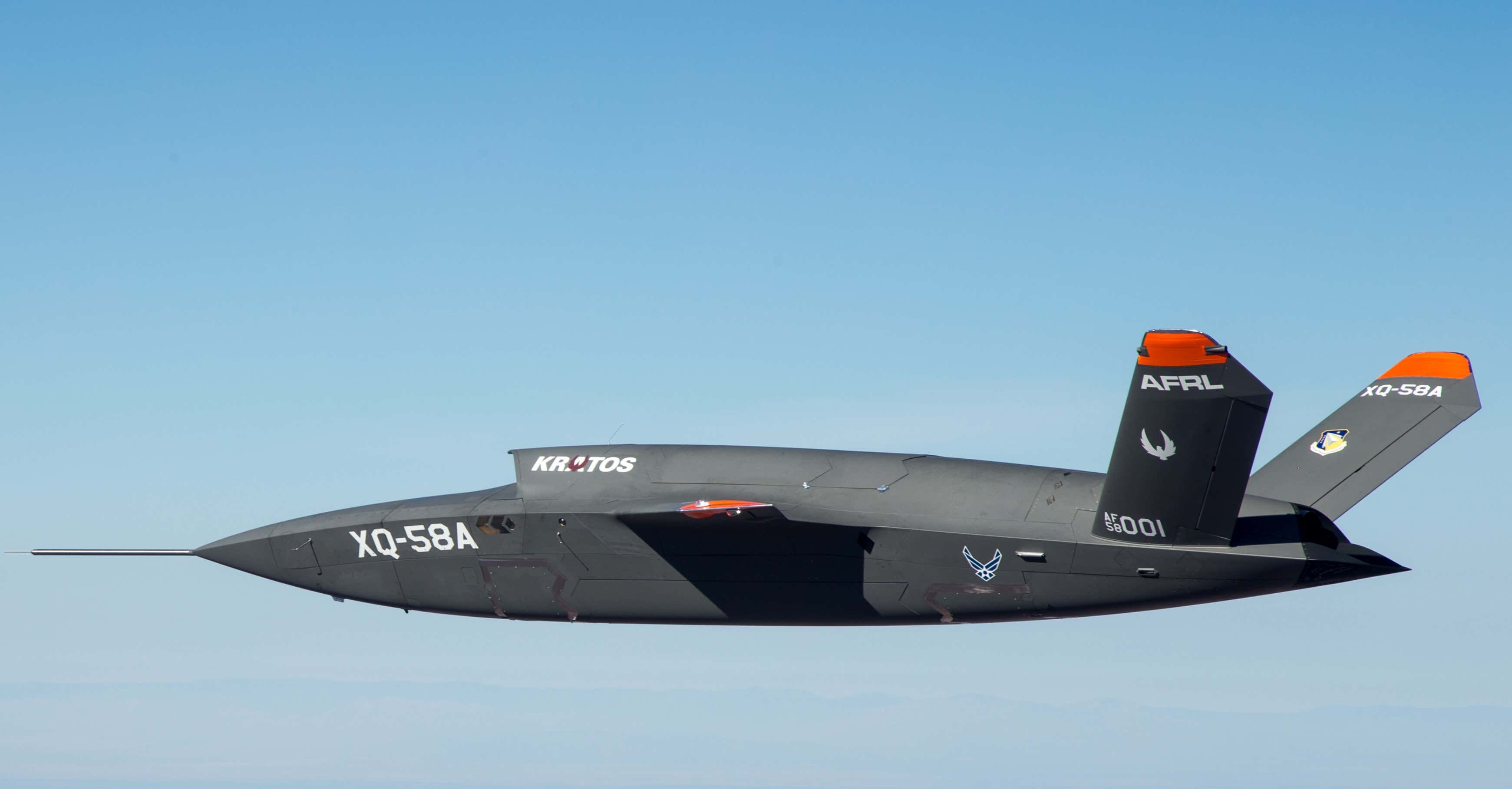
USAF
The first Kratos XQ-58A Valkyrie demonstrator, serial number 15-8001.
According to a transcript of the call, when an investor asked DeMarco for more details about why he feels the OBSS program will be so transformational for the company, the CEO remained quite tight-lipped:
Yes, there's very little publicly out there on this opportunity. Very little. But it is an attributable [sic; attritable] low-cost system. And if we - this is very competitive - we are successful in receiving a contract on this. This has legs. This program has legs. And I really can't say much more about it, [...] because there's only that one piece of paper out there on the program, but it's expected to be awarded very soon now.
We know Kratos is working on a handful of potentially major unmanned aircraft projects that remain classified. This seems to be one of them.
Attritable, in this sense, refers to aircraft or other assets that are low-cost, reusable to an extent, but ultimately expendable. The term is most commonly used in the term "attrition warfare," in which opposing forces attempt to wear one another down by forcing the other side to expend their resources and personnel until they can no longer fight. In the case of UAVs, this would mean imply aircraft that are designed to be able to be lost in combat without causing significant harm to the outcome of an operation. In other words, these are reusable systems that are advanced enough to make a major impact in the battlespace, but cheap enough to be used on high-risk missions where they could be lost.
The Air Force Research Laboratory (AFRL) issued a statement of objectives (SOO) abstract and broad agency announcement (BAA) for the OBSS program earlier this year. Both documents are low on actual specifics of the program, and the BAA states that the full statement of objectives is only available to contractors approved by the Department of Defense. However, AFRL did say that the program aims to “develop and flight demonstrate an open architecture aircraft concept to achieve the goals of rapid time-to-market and low acquisition cost” and that the aircraft “will be designed for limited life in terms of years, not decades, with no depot maintenance and limited field maintenance considerations.”
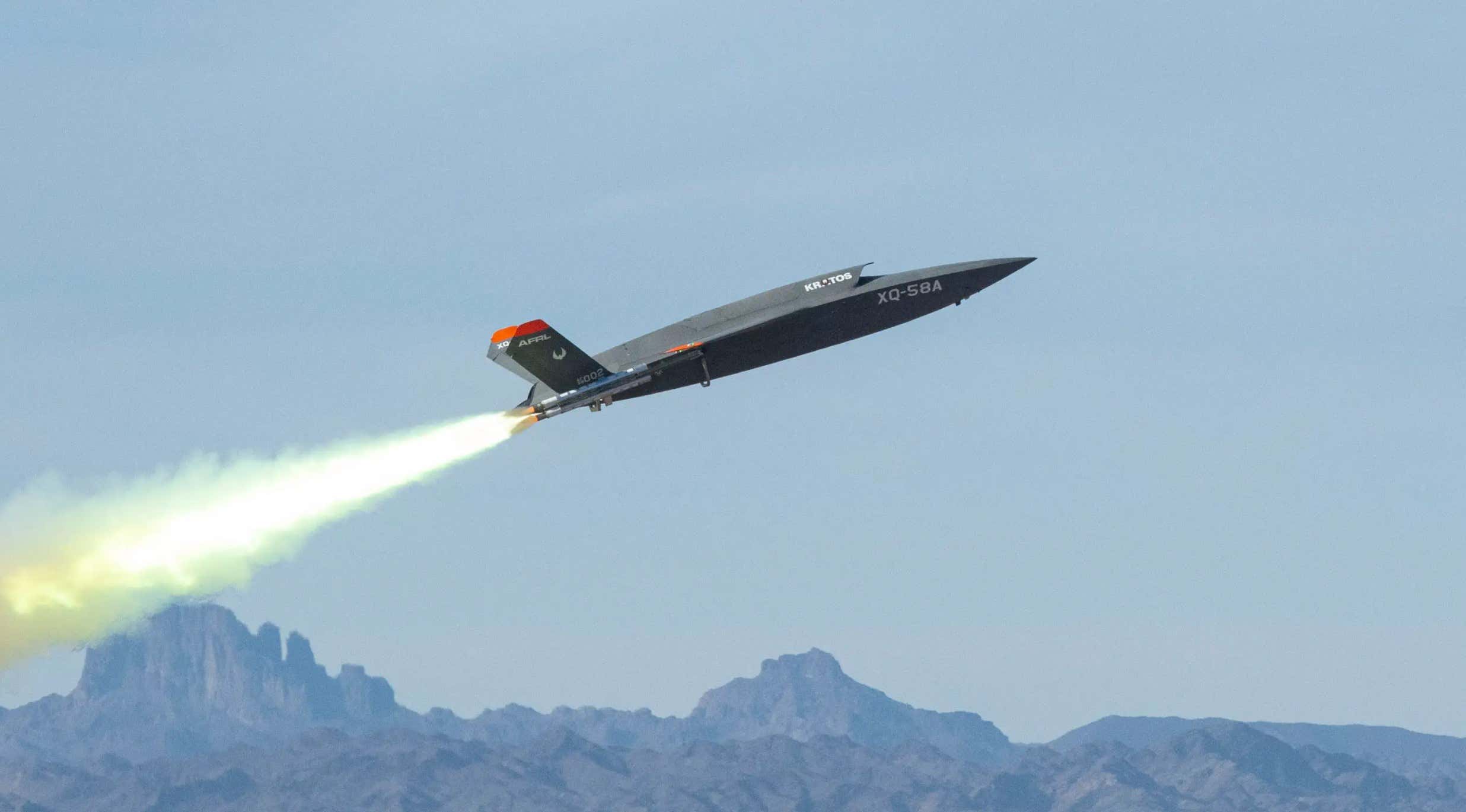
USAF/SSGT. JOSHUA KING
An XQ-58A Valkyrie launches at the U.S. Army Yuma Proving Ground in 2020.
Kratos’ DeMarco stated that his company's “Ghost Works” division has been working on the platform “for the last several months.” There is little information on this sector of the company, but judging from the name’s similarity to Lockheed Martin’s Skunk Works and Boeing’s Phantom Works, it is likely Kratos' advanced design and prototyping division.
The AFRL’s statement of objectives notes that “scalable and responsive manufacturing technologies” will be used to keep costs down for the OBSS program. Kratos’ flagship platform, the XQ-58A Valkyrie, was first developed using these manufacturing concepts as part of the AFRL’s Low Cost Attritable Aircraft Technology program, or LCAAT. Using these techniques, Kratos was able to design, build, and make a first flight of the XQ-58A after just two and a half years from the contract award. The objectives of that program included avoiding the “escalating cost trajectory of tactically relevant aircraft,” “designing and building UAS faster by developing better design tools,” and “maturing and leveraging commercial manufacturing processes to reduce build time and cost.” Kratos has been using the platform to shake things up when it comes to aircraft development, particularly when it comes to cost. A 2019 estimate projected that each XQ-58A unit would cost just $2-3 million.
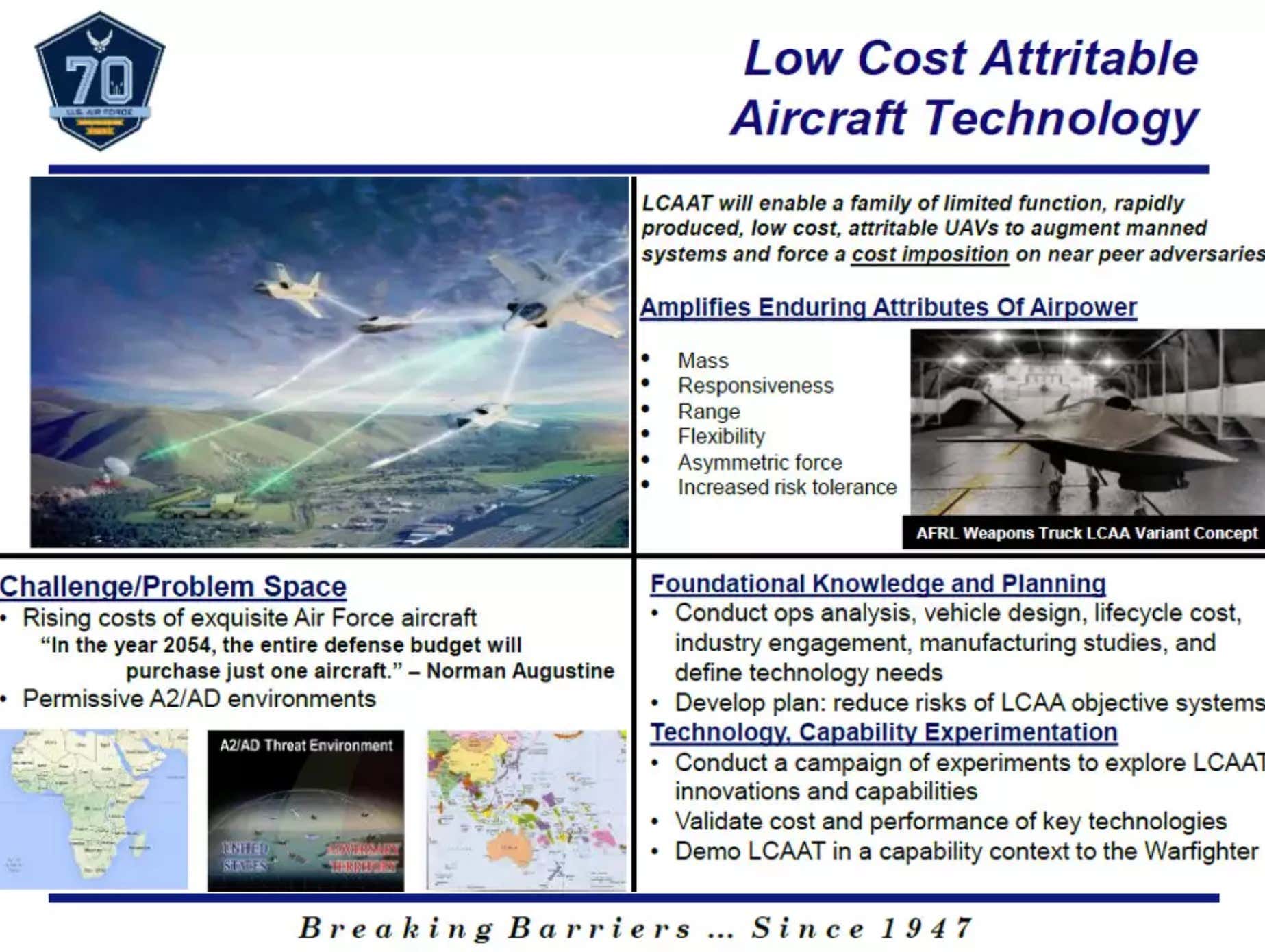
USAF
An Air Force slide outlining the scope of the LCAAT program.
The XQ-58 has become somewhat of an experimental testbed, having already been tested in a wide variety of roles such as serving as a datalink between an F-22 and F-35, or even as a launch platform for smaller drones using its weapon bay. Kratos has also been selected to develop a UAV for the Air Force's Skyborg initiative, and it's likely the XQ-58 will serve as the basis for their offering. The Valkyrie can carry munitions such as the 250-pound class GBU-39/B Small Diameter Bombs (SDB), meaning it could as an attritable unmanned combat aerial vehicle (UCAV).
While Kratos is now the only contractor to have publicly discussed the OBSS program, Inside Defense reported earlier this year that the AFRL aimed to award $18 million in contracts this month to two companies for a “one-year base effort,” with one company to potentially be awarded a $31.5 million, 15-month option effort following this initial contract. The Department of Defense's SOO abstract states that any viable platforms to stem from the program will be ultimately owned by the U.S. government. "The Government envisions future variants that will be built from a common, Government-owned system architecture," the abstract reads. "The ability to develop future variants from the common architecture will allow the Government to rapidly adapt to changing requirements."
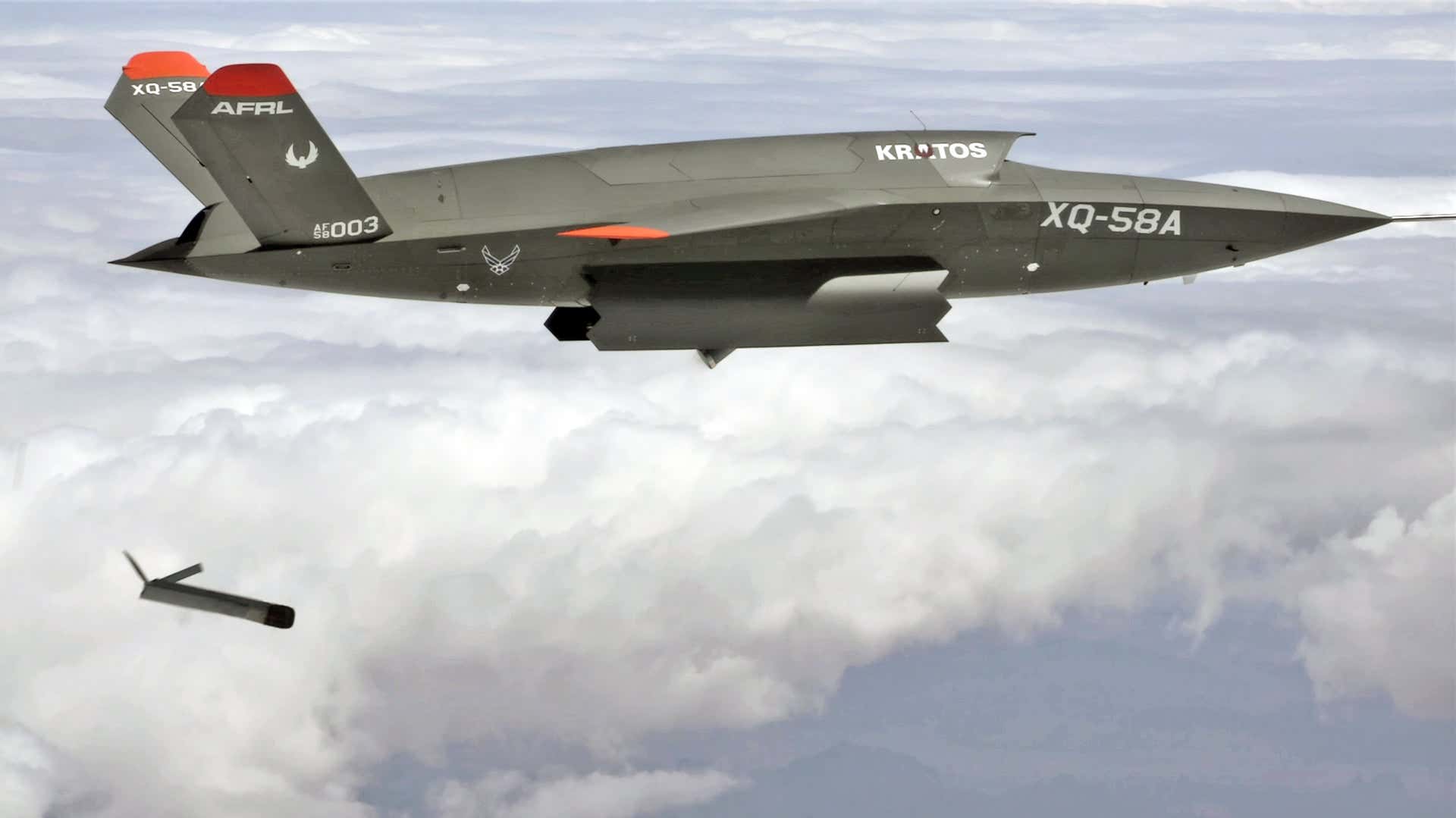
USAF
An XQ-58A deploying an ALTIUS-600 UAV from a Common Launch Tube.
It’s not certain just how this OBSS aircraft will be used, or even what type of aircraft it will be, but judging from its name, any UAVs that come out of the program could be used as distributed sensing platforms. The Air Force has been moving towards using distributed sensor networks as part of its wider Advanced Battle Management System initiative. In such a framework, unmanned platforms of various types could be used to gather battlefield intelligence in high threat areas, and relay that information to other assets or command centers who can then act on it or share it with other forces.
The OBSS platform could even potentially serve as a stand-in sensor for other assets operating outside of the reach of enemy air defenses. The Pentagon is developing a variety of new long-range missiles and other weaponry that are networked, meaning an aircraft or other asset can fire them from well outside of the range of the defense networks that protect their intended target or even target area, and then “hand-off” targeting duties to other systems operating within that contested territory. Even the weapons themselves can be networked together and would benefit from such assistance. It's possible that attritable platforms like the OBSS operating in harm’s way could help fulfill this forward targeting role in the future, and/or simply act as more standard intelligence gathering and surveillance platforms.
It's also worth noting that by networking the OBSS-like drone systems together, massive amounts of territory can be surveilled in a short period of time, providing rapid intelligence collection and targeting capabilities. If one is lost, the swarm can optimize itself in real-time to compensate and maintain persistent surveillance. This distributed capability has been viewed as a game-changer in war games and is being pursued on multiple fronts.
It's important to note that we have no real sense of what the actual OBSS hardware will look like. We could end up seeing a much larger or smaller platform, or even something air-launched that could also extend the sensor capabilities of larger manned or unmanned platforms.
Above all else, the Air Force's initiative in fielding these platforms demonstrates the service's ongoing commitment to fielding more low-cost, but highly-capable unmanned platforms in the near future.
No comments:
Post a Comment